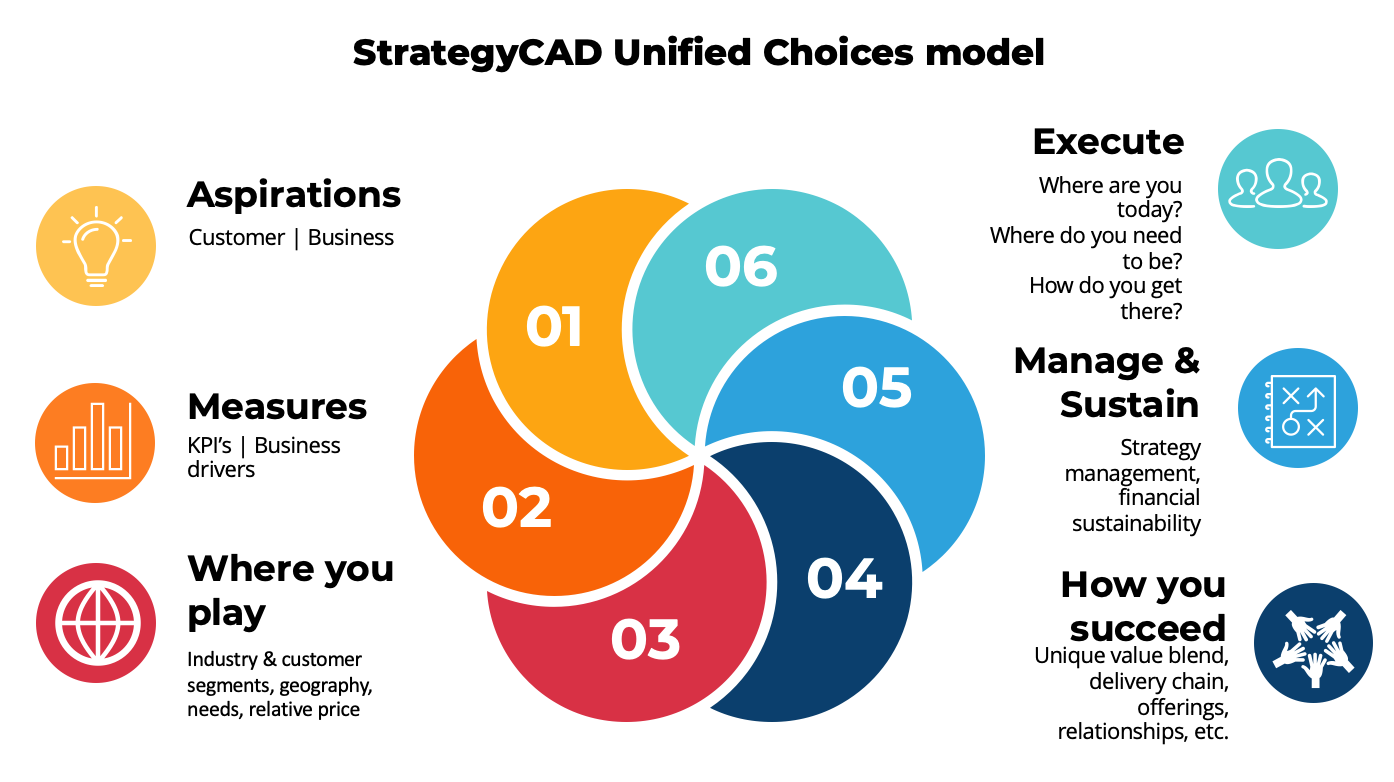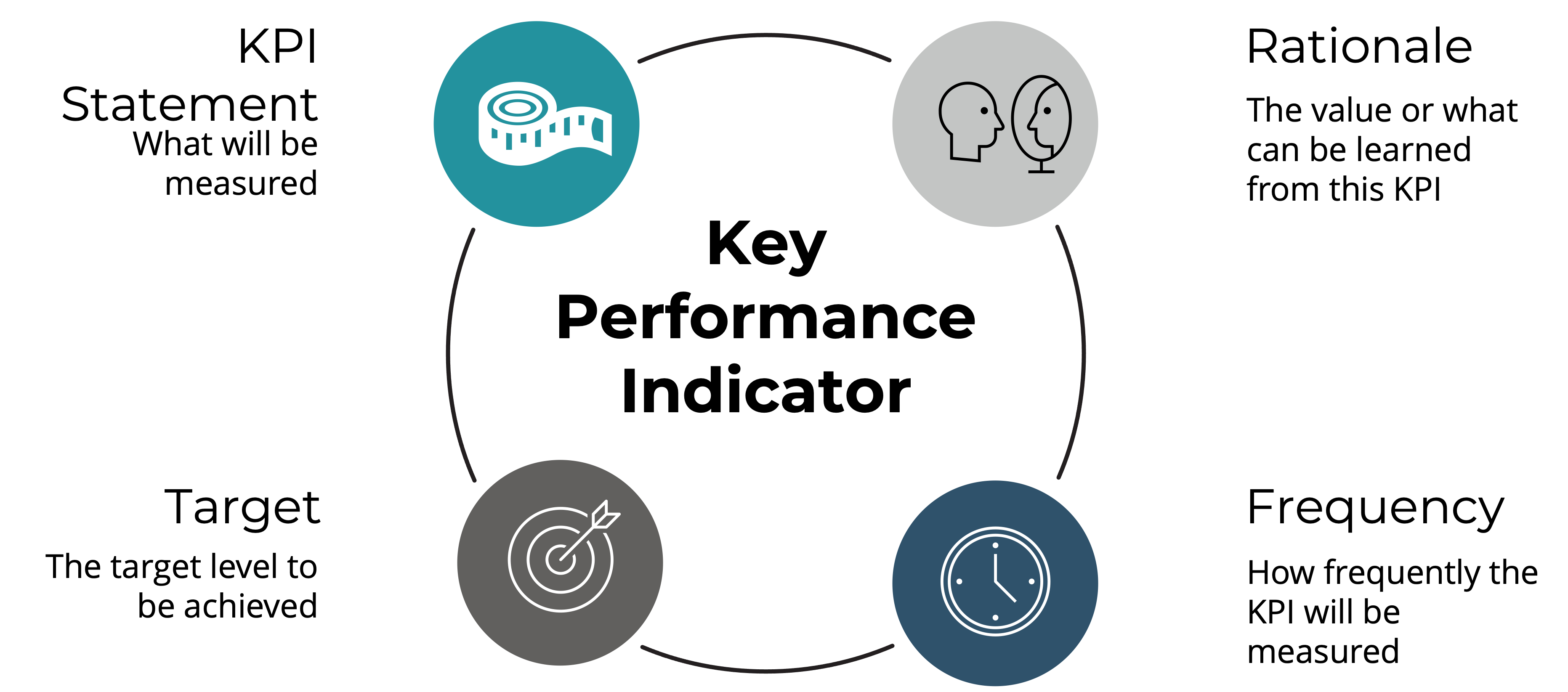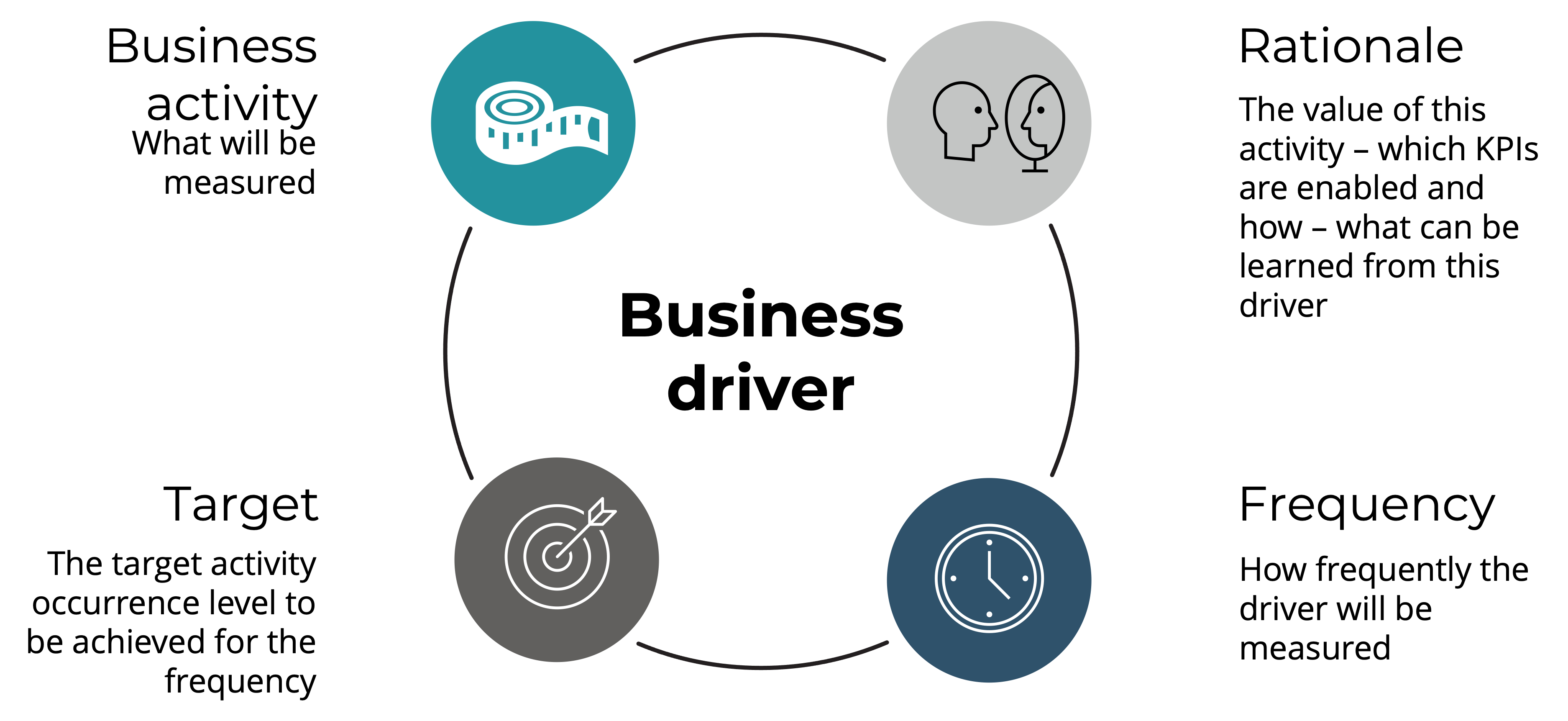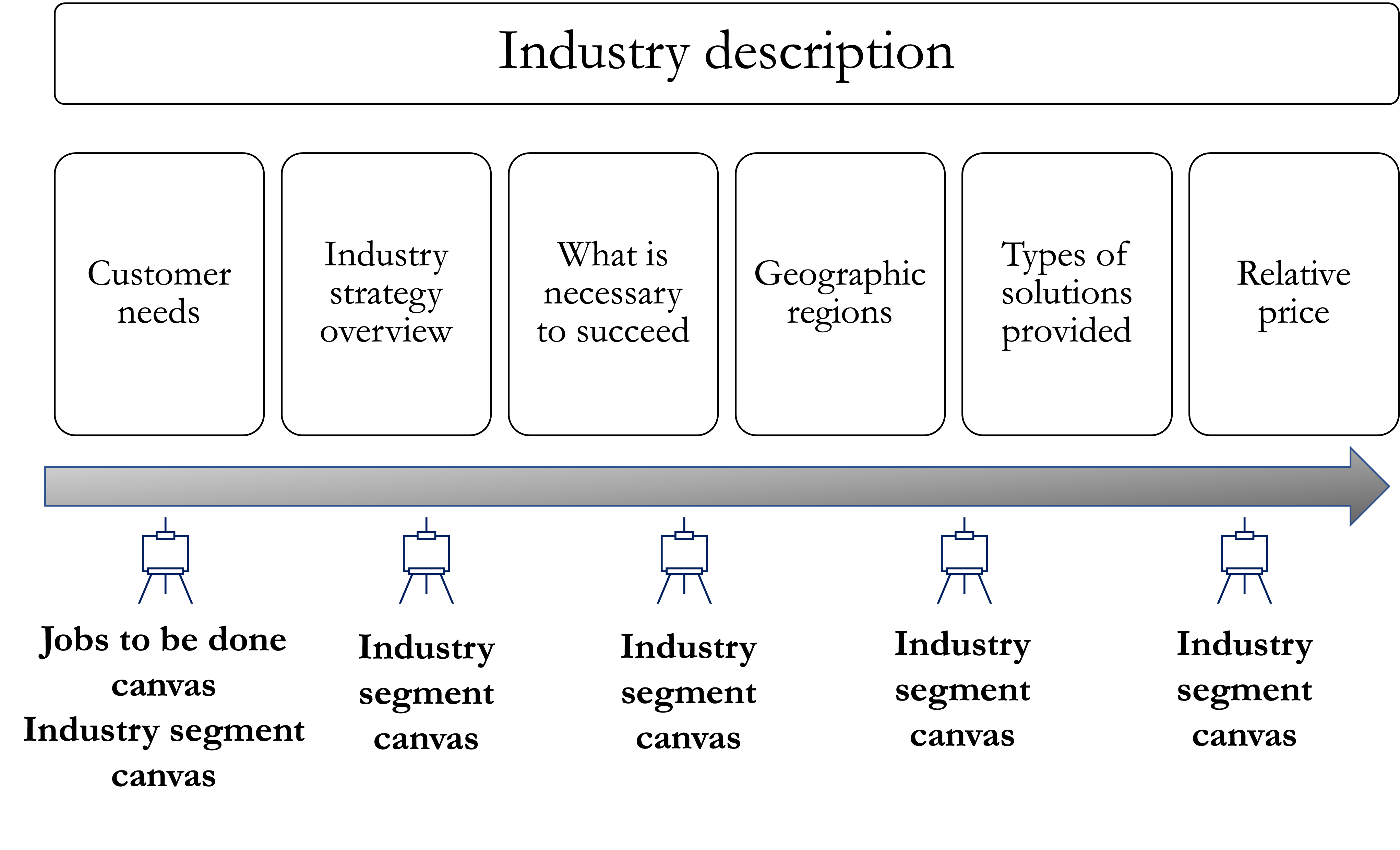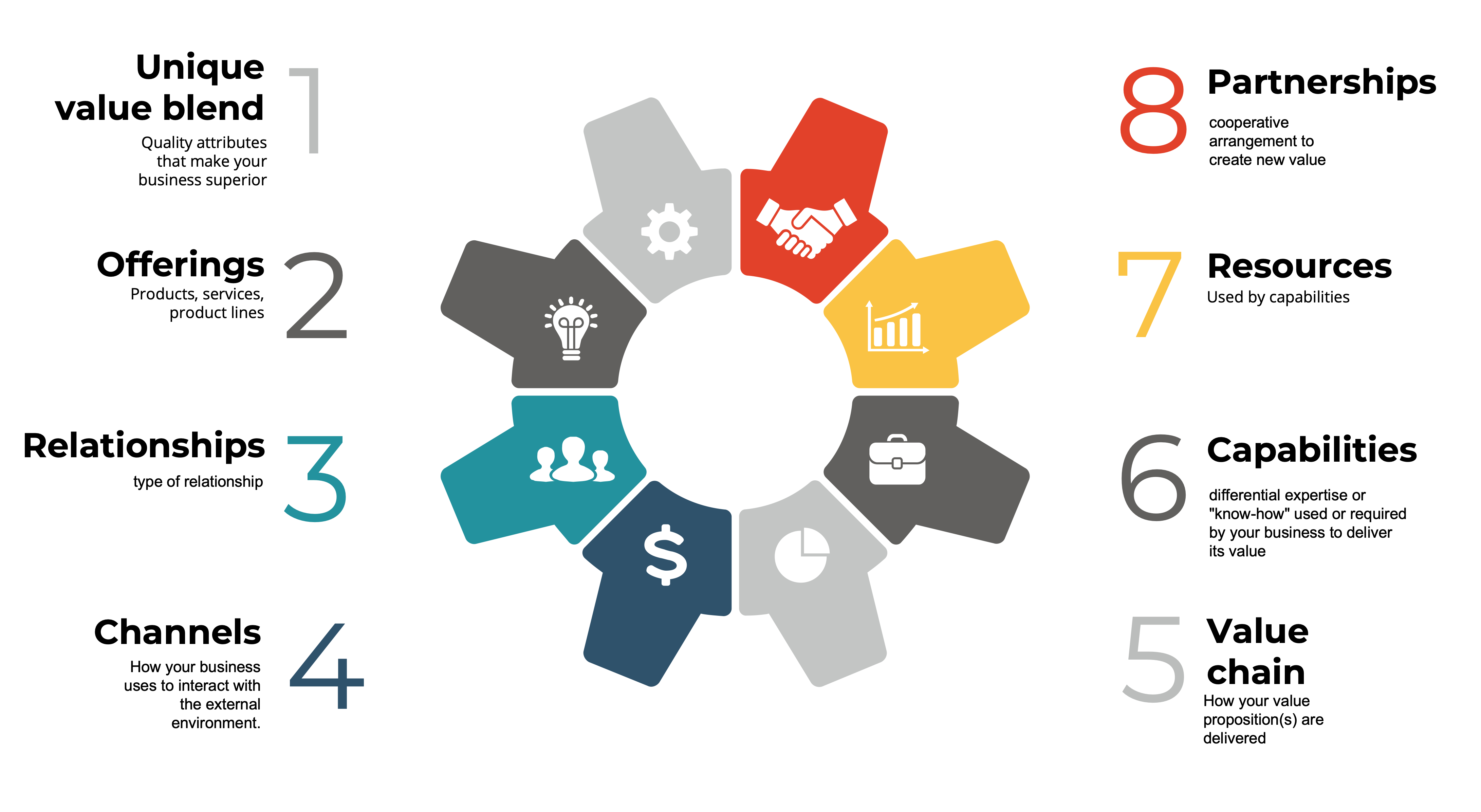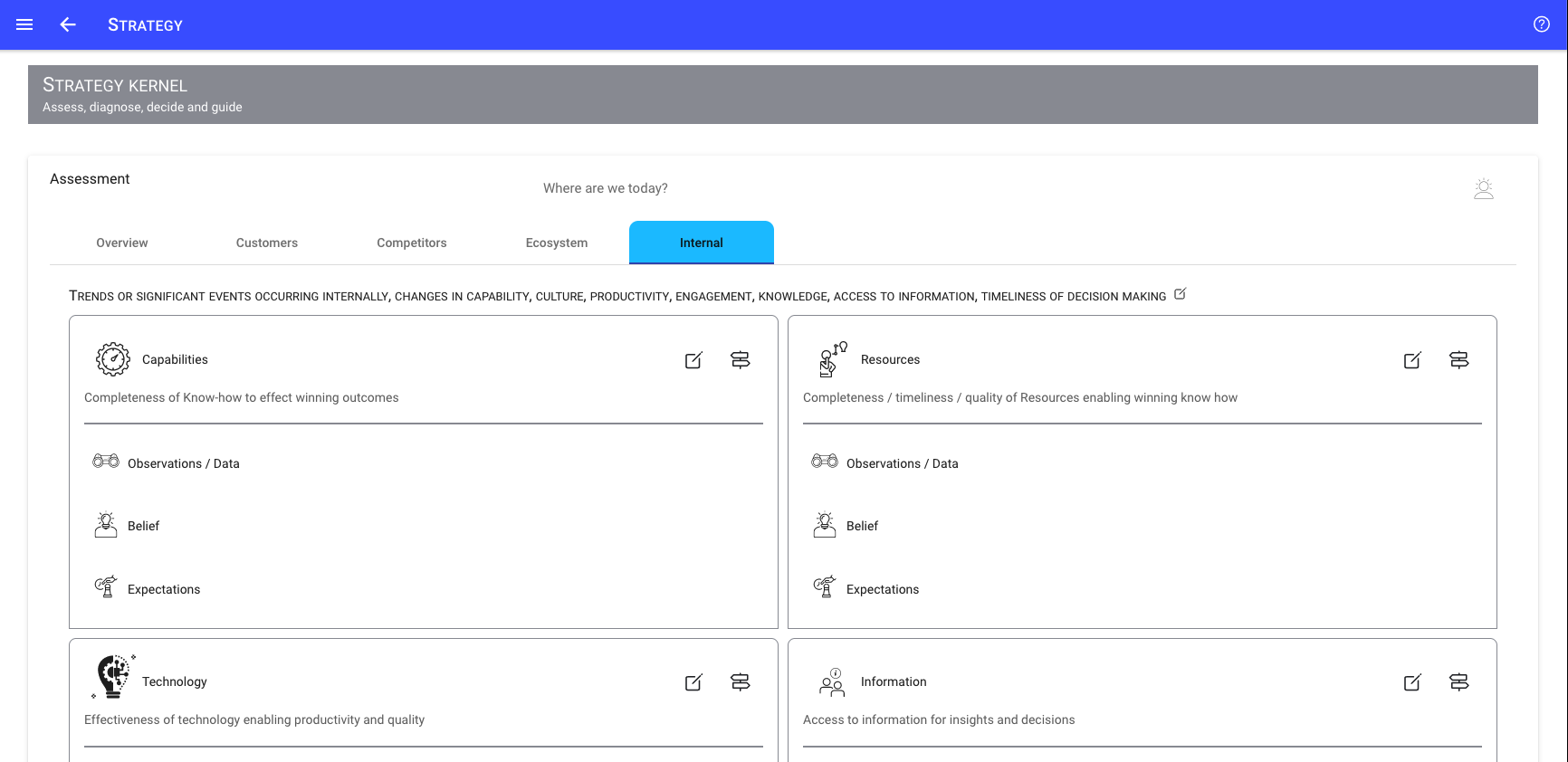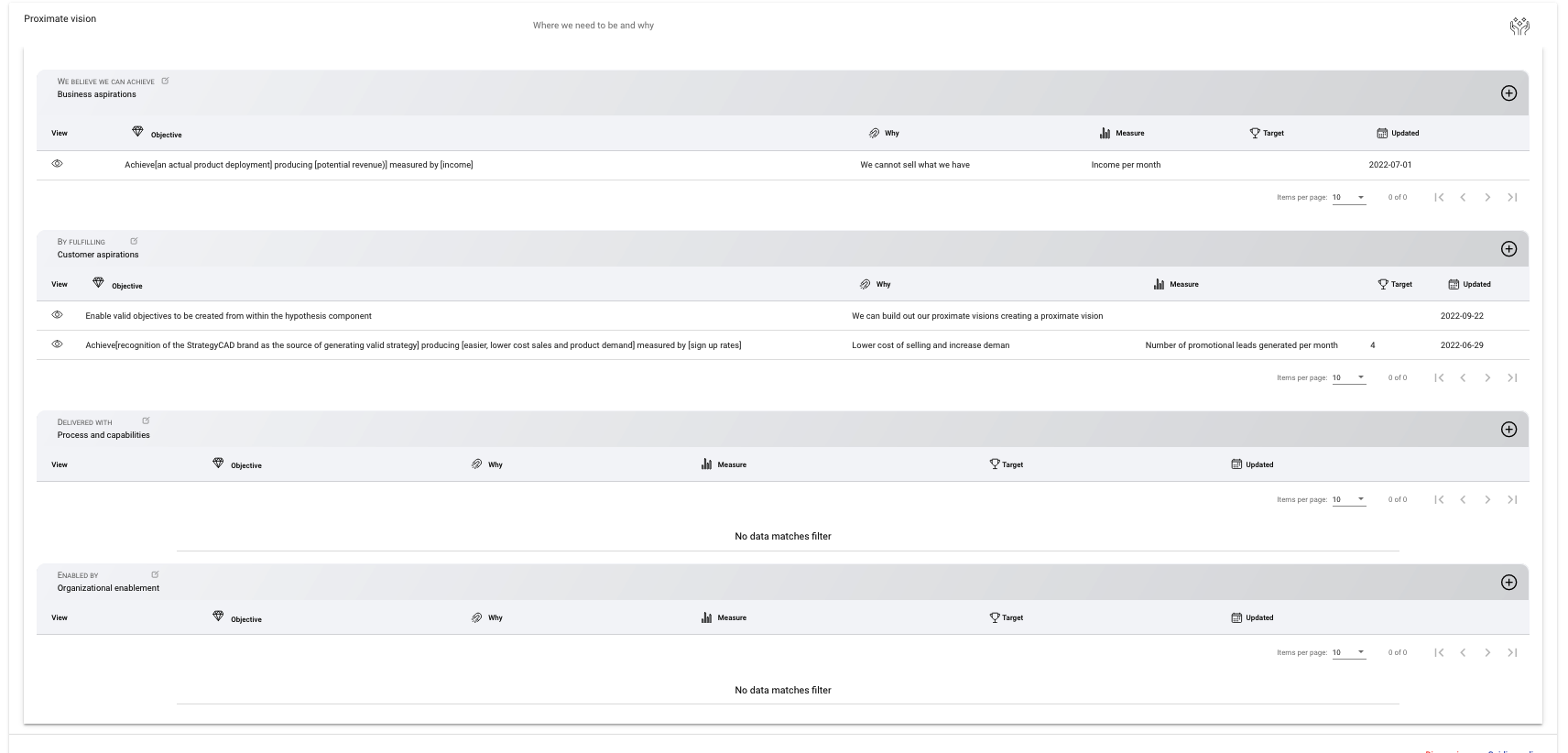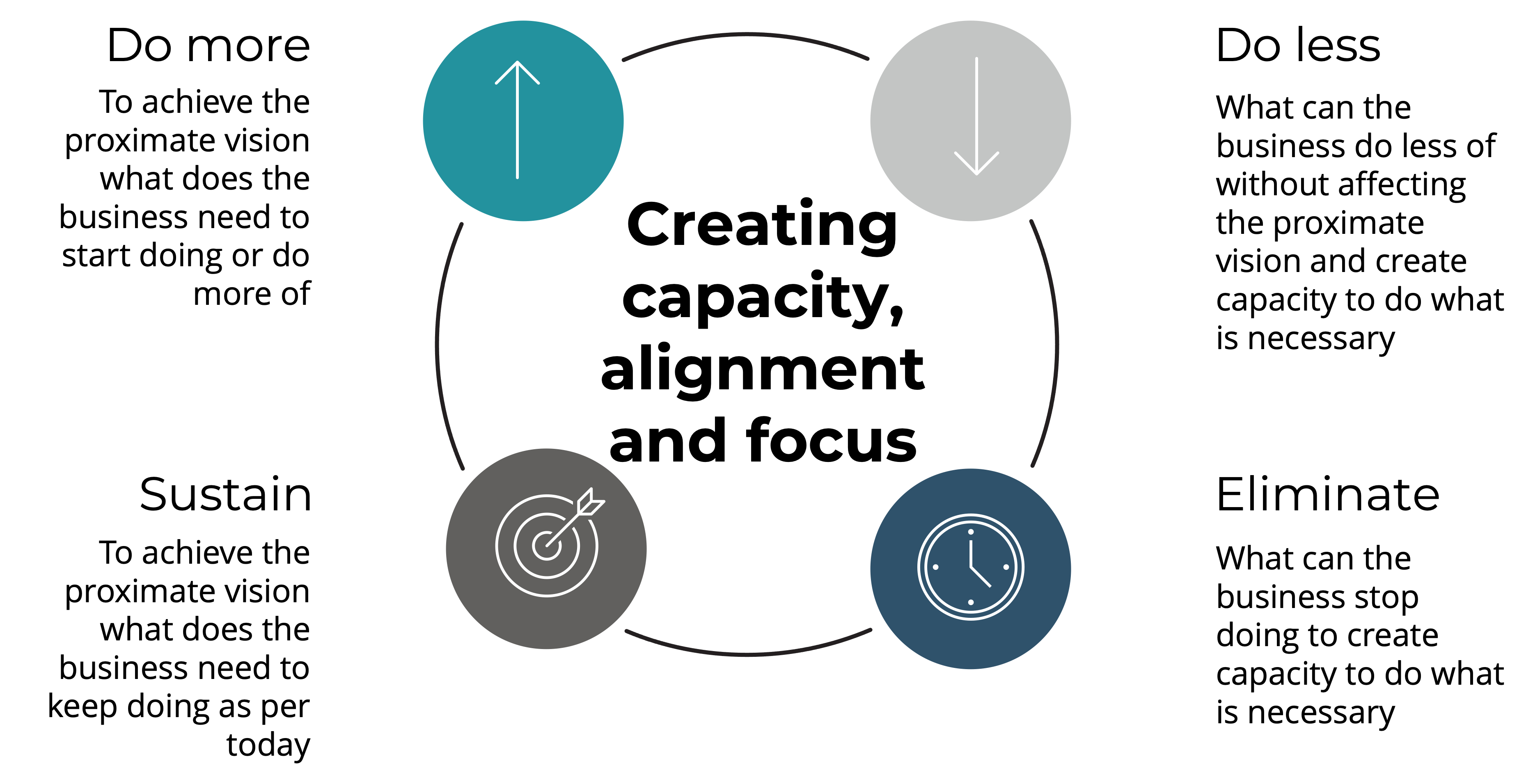There are potentially multiple hotspots but here are few
to get you started on your increased productivity journey.
Defining your unique value blend defines the attributes that makes
your business superior in the hearts and minds of your target
customers. For example, Walmarts value blend might include
- Friendly service
- Convenience - stores are nearby
- Brands - customers trust and want
- Lowest price
In the presence of an adequately defined value blend your team
is aligned and focussed on the qualities of your business that matter most.
Productivity is recovered by replacing the need to be all things
to everyone with focus and alignment on those things
that matter most to succeed with your target customers.
Action tips - Unique value blend
Define your Unique value blend that represents the qualities
of your business that enables it to be seen as superior
in the hearts and minds of your customers.
StrategyCAD™ includes a diverse range of value drivers you can use
to build your better strategy faster.
Ensure these quality attributes are reflected in your offerings,
channels and relationships.
Your business value chain is a series of activities that your business
goes through to create and deliver a product or service to
a customer.
The purpose of a value chain and the
StrategyCAD™ Value chain canvas
is to identify and understand the different steps involved in
creating and delivering a product or service,
and to identify opportunities for efficiency and cost savings.
By defining, understanding your value chains, you can identify areas where
you can improve its operations, reduce costs, and create a more
efficient and effective business model.
The ultimate goal of a value chain is to create value for customers
and stakeholders, while also creating a
sustainable competitive advantage for the company.
Action tips - Value chain
Define your value chain for the products / services your
business provides.
Ensure each step has a defined purpose, objectives and success
criteria. Ensure each secondary activity in the value chain is defined in
terms
of how it enables the primary activities.
Use the discovery model, to define, investigate, experiment with
and then achieve productivity opportunities in your value chain.
Competencies or capabilities are the "Know-how"
that your business is or needs to be excellent at in order
to deliver the unique value blend, related offerings
and relationships consistently and
productively.
Action tips - Competencies
Define and assess the competencies your business needs to be brilliant at.
If there are gaps in skills, access to resources, insufficient support
from technology, organizational cultural or other factors limiting
the competency - establish an action plan to increase the value
of the competency and be more organized to apply it to boost
the productivity associated with the competency.
You can use the StrategyCAD™ Competency canvas to capture
the purpose, success criteria and objectives of your business
competencies along with its enablers and how to be more organized
in using them.
Resources include intangible resources like data, information,
and skills and tangible resources like physical materials.
Are competencies, capabilities or key activities
being impaired or stalled by
inadequate or unavailable resources? This can be discovered through
your competency and value chain assessments or taking the direct advice
from your teams in the value chain.
Action tips - Resources
Ensure your value chain key activities and competencies
have timely access to the resources of sufficient quality
required.
Partnerships or strategic alliances can be a vehicle for achieving important
strategic objectives
including productivity, lowering costs, creating new sources of
differentiation, or entering new markets.
A partnership between your business and another is
a cooperative arrangement that combine their resources and capabilities
to create new value.
Action tips - Partnerships
Consider how and what partnerships will augment the capabilities
your business needs to delivery its products / service better
or faster.
